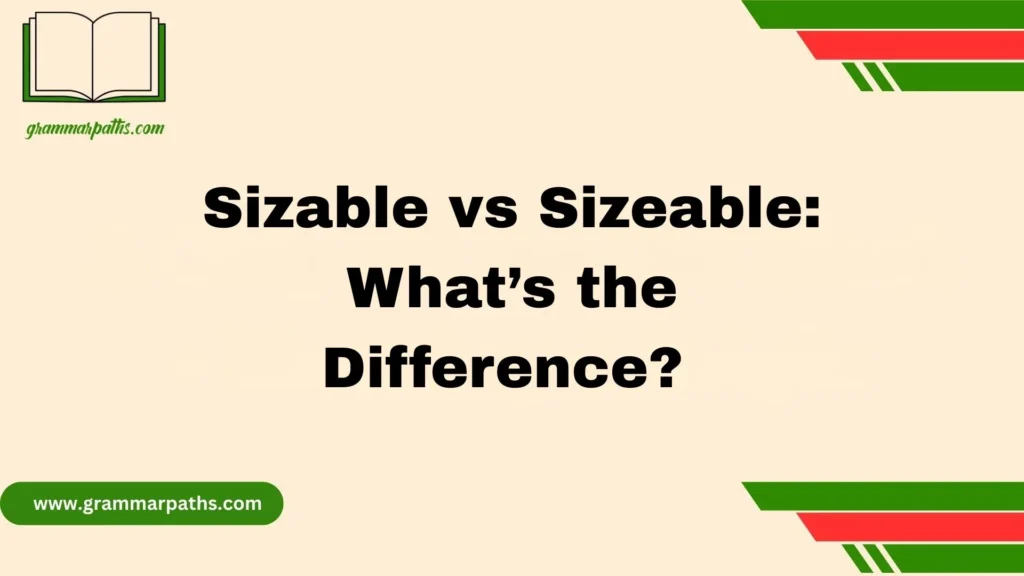In the world of English grammar, mastering the predicate nominative is key to writing clearly and correctly. A predicate nominative is a noun or pronoun that renames or identifies the subject of a sentence and always follows a linking verb like is, was, are, or becomes. This concept falls under the broader category of subject complements, which help provide more information about the subject of the sentence.
For example, in the sentence “My brother is a doctor,” the word “doctor” is a predicate noun because it renames the subject, “brother.” Understanding predicate nominative examples and how they differ from predicate adjectives is crucial for students, teachers, and grammar enthusiasts. This knowledge also supports correct subject-verb agreement, proper sentence structure, and overall syntax fluency.
Many people look up this term when preparing for exams, completing homework, or brushing up on grammar rules for writing.
What Is a Predicate Nominative? A Clear, Simple Definition
A predicate nominative is a noun or noun phrase that follows a linking verb and renames or identifies the subject of the sentence. In other words, it gives you another name or description for the subject.
Take the sentence:
“Sarah is a teacher.”
Here, “teacher” is the predicate nominative. It follows the linking verb “is” and tells us what Sarah is — in this case, her profession.
The key thing to remember:
- The predicate nominative renames or explains the subject.
- It always follows a linking verb.
The Grammar Behind Predicate Nominatives: How They Work in Sentences
Predicate nominatives play a specific role: they connect back to the subject through a linking verb, essentially acting as a second label for the subject.
Sentence Structure Breakdown:
| Part of Sentence | Example | Function |
| Subject | Sarah | The person or thing the sentence is about |
| Linking Verb | is | Connects subject to predicate nominative |
| Predicate Nominative | teacher | Renames or identifies the subject |
This structure is crucial for maintaining clear meaning. Without it, sentences can become confusing or awkward.
Common Linking Verbs That Signal a Predicate Nominative
Not every verb works here. Linking verbs act like equals signs — they link the subject to more information about itself.
Here’s a quick list of frequently used linking verbs:
- Be (am, is, are, was, were, be, been, being)
- Become
- Seem
- Appear
- Feel
- Grow
- Look
- Remain
- Smell
- Sound
- Taste
Example Sentences
- “He became a famous artist.”
- “The soup tastes delicious.” (Here, “delicious” is a predicate adjective, not a predicate nominative — more on that soon.)
- “They are engineers.”
Predicate Nominative vs Predicate Adjective: Understanding the Difference
These two get confused a lot because they both come after linking verbs, but they do very different jobs.
| Feature | Predicate Nominative | Predicate Adjective |
| What it is | A noun or noun phrase | An adjective |
| Purpose | Renames or identifies the subject | Describes the subject |
| Example | “She is a doctor.” | “She is happy.” |
Examples to Clarify
- Predicate nominative: “My friend is a writer.” (Writer renames “friend.”)
- Predicate adjective: “My friend is talented.” (Talented describes “friend.”)
Real-World Examples of Predicate Nominatives in Action
You probably use predicate nominatives daily without realizing it. They appear everywhere—from casual talk to formal writing.
- “John is the manager.”
- “That lady is my aunt.”
- “Today’s winner was the best player.”
In literature, predicate nominatives add precision and clarity:
- Shakespeare: “Thou art my joy and my sorrow.”
- Hemingway: “She was a fighter.”
Compound Predicate Nominatives: When There’s More Than One
Sometimes, a sentence has more than one predicate nominative connected by and or or.
Example:
“Mark is a teacher and mentor.”
Here, both “teacher” and “mentor” rename Mark. Compound predicate nominatives add richness and detail to sentences.
Things to Watch Out For
- Don’t confuse compound objects with compound predicate nominatives.
- Make sure the nouns connected refer to the subject.
How to Spot Predicate Nominatives in Sentences: A Step-by-Step Guide
Knowing the theory is one thing. Spotting predicate nominatives in the wild is another.
Follow these steps:
- Find the subject. Who or what is the sentence about?
- Identify the verb. Is it a linking verb?
- Look after the verb. Is there a noun or noun phrase renaming the subject?
Practice Sentences
- “The winner is she.” (Predicate nominative = “she”)
- “That person seems confused.” (Not a predicate nominative, but a predicate adjective)
- “My brother became a chef.” (Predicate nominative = “chef”)
Choosing the Correct Pronoun Case: I or Me? She or Her?
Here’s where many stumble. When a pronoun follows a linking verb and acts as a predicate nominative, it should be in the subjective case.
Correct Examples
| Sentence | Explanation |
| “It is I.” | “I” is subject pronoun here |
| “This must be she.” | “She” is correct as predicate nominative |
| “The winner is we.” | “We” is correct, not “us” |
Common Mistakes
- Saying “It’s me” instead of “It is I” is widespread but less formal.
- Mixing object pronouns (me, her, us) where subject pronouns (I, she, we) are grammatically correct.
Common Mistakes Learners Make with Predicate Nominatives
Many grammar errors come from misunderstanding predicate nominatives.
Watch for these:
- Using action verbs where linking verbs are needed:
“She runs a doctor.” (Incorrect)
“She is a doctor.” (Correct) - Confusing predicate nominatives with direct objects:
“They named him president.” (“president” is direct object here, not predicate nominative)
“He is the president.” (Predicate nominative) - Misusing compound nominatives without clear agreement.
Why Predicate Nominatives Are Crucial for Writing Clarity
Predicate nominatives make your sentences clearer by explicitly renaming the subject. This clarity helps:
- Avoid confusion about who or what is being discussed.
- Maintain subject-verb agreement.
- Enhance formal and academic writing precision.
Without predicate nominatives, sentences risk becoming vague or awkward.
Test Yourself: Mini Quiz on Predicate Nominatives
Try these out. Circle the predicate nominative in each sentence.
- “She is the leader.”
- “They became champions.”
- “The sky looks blue.”
- “It was he who called.”
- “My mother feels tired.”
Answers:
- leader (predicate nominative)
- champions (predicate nominative)
- blue (predicate adjective)
- he (predicate nominative)
- tired (predicate adjective)
Downloadable Cheat Sheet: Quick Rules & Examples
| Topic | Key Points | Examples |
| Definition | Noun/noun phrase renaming the subject | “John is a pilot.” |
| Linking Verbs | Connect subject to predicate nominative | “She became a lawyer.” |
| Pronoun Case | Use subject pronouns after linking verbs | “It is I.” |
| Predicate Nominative vs Adjective | Nouns rename; adjectives describe | “He is a teacher.” vs “He is happy.” |
| Compound Predicate Nominatives | Multiple nouns renaming subject | “She is a mother and artist.” |
Predicate Nominatives in Other Languages: A Quick Look
English isn’t alone in using predicate nominatives. Latin, French, and German also feature this grammar structure, but with slight variations.
- Latin: Uses the nominative case after linking verbs, just like English.
- French: Linking verbs followed by nouns in the nominative form, though pronouns may change.
- German: The predicate nominative matches the subject in case and gender.
Knowing this can deepen your understanding of English grammar and its roots.
Final Thoughts: The Power of Mastering Predicate Nominatives
Understanding the predicate nominative is essential for mastering English grammar and building strong, clear sentences. Whether you’re a student, a teacher, or a curious learner, recognizing how a noun or pronoun can act as a subject complement will sharpen your language skills and improve your writing. Remember, a predicate nominative always follows a linking verb and renames the subject, reinforcing sentence meaning rather than expressing an action.
From distinguishing between predicate nominatives and direct objects to identifying predicate adjectives, having a firm grasp of these concepts allows you to confidently navigate even the most complex sentence structures. As you continue to explore grammar, use this knowledge to enhance your communication, ace your exams, or even teach others. With plenty of examples, clear rules, and helpful comparisons, you’re now equipped to recognize and use predicate nominatives like a pro.
FAQs:
What is a predicate nominative?
A predicate nominative is a noun or pronoun that follows a linking verb and renames or identifies the subject.
Example: “Marie is a doctor,” where “a doctor” renames “Marie.”
Difference between complement and predicate nominative
All predicate nominatives are subject complements, but not every complement is a predicate nominative; complements can also be adjectives (predicate adjectives) that describe the subject rather than rename it.
Difference between predicate nominative and direct object
A predicate nominative follows a linking verb and renames the subject, whereas a direct object follows an action verb and receives the action (e.g., “She chose the book”—“book” receives “chose,” not rename “she”).
How to remember predicate nominative
Think “noun after ‘to be’ equals name”: if a noun comes right after a form of be (is, are, was, were, etc.) and renames the subject, it’s your predicate nominative.

Grace Marie is the dedicated writer behind GrammarPaths.com, where she shares her passion for English grammar, idioms, and writing mastery. With a strong background in language studies and years of experience helping learners improve their communication skills, Grace creates clear, practical, and engaging content that makes English easy to understand.












